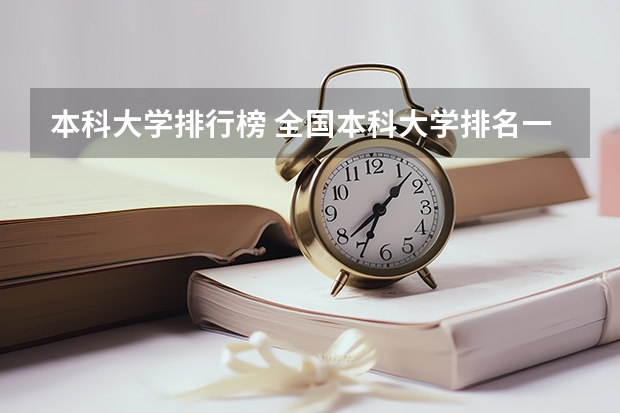高考英语语法:高中英语语法-高中英语语法讲义3(高考英语13个语法考点 高中英语重点语法知识归纳)
2024-02-16 05:20:39 | 爱好网
本文目录一览:

高考英语语法:高中英语语法-高中英语语法讲义3
《高中英语语法-高中英语语法讲义3》由出国留学我精心为您学习英语准备.liuxue86.com。本内容整理时间为05月12日,如有任何问题请联系我们。高中英语语法讲义3
三、一致关系
一)主谓一致
1. 主谓一致(与插入语无关)
1主谓的分隔原则:主谓之间可以用定语从句或者省略的定语从句分隔。
2定语从句中的主谓一致:
3随前一致:
n. + together with n2
as well as
including
along with
with / of
accompanied with / by
4就近原则:n1 or n2 +v(就近原则)
either n1 or n2
5可数n1 and 可数n2+v(pl)
不可数n1 and 不可数n2+v(pl)
例外:war and peace is… war and peace是一个整体
但是如果主语表示的是同一个概念,同一人,同一事的时候,谓语动词用单数,这种结构的特征是and连接的两个词只有一个冠词。
The iron and steel industry is very important to our country.
The head master and mathematical teacher is coming.
The head master and the mathematical teacher are coming.
类似的还有:law and order bread and
butter black and white
To love and to be loved is …
A lawyer and a teacher are…
A lawyer and teacher is …
6随后原则:not A but B / not only A but also B+v.(与B一致)
7百分比结构:most , half , rest , some , majority , one+persent
of+n1+v.(由n1决定)
8倒装结构的主谓一致:
a)There be +n 由名词决定动词
b)Among , between等介词位于句首引起倒装结构:
Among / Between …+系动词+n. (由名词决定动词)
9The+adj的主谓一致:
a)当表示"一类人",
b)当表示某一抽象概念时
The good is always attractive.
10 To do/doing/主从+vs
*More than one+n
many a +n.
a day or two
二)、倒装
1 全部倒装
是只将句子中的谓语动词全部置于主语之前。此结构通常只用与一般现在时和一般过去时。常见的结构有:Up went the plane = the plane went up.
1) here, there, now, then, thus等副词置于句首, 谓语动词常用be, come, go, lie, run。
2) 表示运动方向的副词(back, down, off, up)或地点状语置于句首,谓语表示运动的动词。
注意:1) 上述全部倒装的句型结构的主语必须是名词,如果主语是人称代词则不能倒装。Here he comes. Away they went. 2) 谓语动词是be的时候,不能倒装。 Here it is. Here you are.
3) 形容词短语/分词短语位于句首,引起倒装
*typical of characteristic of
*coinciding with + n
4) 表示地点范围的介词短语位于句首,谓语动词为系动词,一定引起倒装
In…(表语)+系动词+主,主同。
*在倒装句型答案中不能出现there
*常考介词要倒装:among between in at beneath
常考的系动词:be lie exist remain rest
部分倒装
1. 否定 adv 位于句首,引起倒装:not only, not until, hardly, scarcely,
seldom, rarely, no sooner…than
1) not until + 时间 + 主谓倒装,not until + 句子+主谓倒装
2) only+状语位于句首
only +ad. eg: recently
prep.短短语 eg: in recently years
从句 eg: when clause
only一个词本身不倒装
3) 在比较级结构中,than后面可以倒装,也可以不倒装。
部分倒装是指将谓语的一部分如助动词或情态倒装至主语之前。如果句中的谓语没有助动词或情态动词,则需添加助动词do, does或did,并将其置于主语之前。
? 1) Neither, nor, so 表示前面句子的共同否定或者肯定,产生倒装,一般主动词提前,谓语动词的其他部分就
4) as / though引导的让步从句必须将表语或状语提前 (形容词, 副词, 分词, 实义动词提前)。
as〔让步〕虽然,尽管〔词序倒装。语气比 though 强〕。
Successful as he is, he is not proud. 他虽成功,却不骄傲。
Women as she is, she's every brave.
Try hard as he will, he never seems able to do the work satisfactorily.
注意:A) 句首名词不能带任何冠词。B) 句首是实义动词, 其他助动词放在主语后。如果实义动词有宾语和状语, 随实义动词一起放在主语之前。
5) 其他部分倒装
a) so… that 句型中的so; such… that句型中的such位于句首时,需倒装。
So frightened was he that he did not dare to move an inch.
b) 在某些表示祝愿的句型中:May you all be happy.
c) 在虚拟语气条件句中从句谓语动词有were, had, should等词,可将if 省略,把 were, had, should 移到主语之前,采取部分倒装。Were I you, I would try it again.
四、复合句
从句可分为:
? 名词性从句' 主语从句、宾语从句、表语从句、同位语从句
? 形容词性从句'定语从句
? 副词性从句'状语从句
" 常考的关系代词:that; which; who/whom/whose; where; when; what; as。
" 常见的同位语从句现行词(that之前的抽象名词):fact, idea, news, hope, conclusion, evidence, opinion, problem, thought, understanding…
" 常用的引导词
o 时间状语从句:while; when; before; whenever; as; after; till; until; since; once; ever since; as/so long as; as soon as; no sooner… than; hardly… when; scarcely/barely… when; the moment/minute/instant; on (the point of) doing…
o 地点状语从句:where; wherever
o 原因状语从句:because; since; as; seeing that; considering that; now that; in that; for fear that; lest; owing to the fact that; because of the fact that; due to the fact that…
o 方式状语从句:as; as if; as though; how; save that…
o 比较状语从句:as; than; as… as; not so… as; hardly… than;
o 结果状语从句:so that; so… that; such… that; so as to…
o 条件状语从句:if; unless; in case; so long as; so far as; provided/providing/that; supposing; granted/granting that…; giving that….
o 让步状语从句:though; although; even if; even though; whether; as; however; no matter (what, how, when); for all that; in spite of the fact that; granted that; regardless of the fact that…
o 目的状语从句:that; so that; in order that; lest; for the fear that; in case…
定语从句:
which 引导的定语从句结构
1)which是关系代词,which后面应该加缺主语或者宾语的句子,
在这个句子中,which要作成分,作主语或者宾语
2)in which+完整的句子
which在定语从句中作in的宾语,所以不能作后面句子的主语
3)名词+of which+谓语动词
of which来修饰名词,名词在定语从句中作主语,所以后面直接跟谓语动词
I have five books three of which are borrowed from Mary.
4)介词+ which +to do 其功能相当于定语从句。
The key with which to open the door is lost.
5)定语从句的省略结构:
1. 如果that / which在定从中作 宾语,可以省略.
sub+vt+n+(which / that)+sub+vt
→s+vt+n+s+v
s+vt+n1+n2+vt
*当做题时,若发现两个名词在一起,但是似乎连不上,则一定省略that /
which,则动词为vt,做谓语。
6)定从的特殊省略
the way (in which) + 句子
the reason (why that)+句子 均为完整句
the time (that / when)+句子
I do remember the first time (that省) I ever heard the sweetest voice in the world.
By the time省that+句子,句子。
7)定从的主系省略(主+系可同时省)
即:which be , who be , that be可同时省
状语从句省略结构
这种省略从句主语的方式理论上需要满足以下两个条件:
第一、特定的状语从句引导词:although though even though when while if as
第二、从句主语和主句主语必须保持一致;
第三、从句的谓语必须是be动词,主语和be动词同进同出,
比如上面的they和are要么同时省略,要么同时保留。 《高中英语语法-高中英语语法讲义3》由出国留学我精心为您学习英语准备.liuxue86.com

高考英语13个语法考点 高中英语重点语法知识归纳
很多高中生不知道英语语法方面有哪些重点知识,高考英语经常出现的语法考点有哪些呢?下面我为大家介绍一下!
高考容易出现的13个语法知识总结
1. 考查never置于句首时的倒装
当否定副词never置于句首时,其后习惯上要用倒装语序(与一般疑问句形式相同)。如:(答案分别为BA)
(1) Never in my wildest dreams _________ these people are living in such poor conditions. (安徽卷) 爱好网
A. I could imagine B. could I imagine
C. I couldn’t imagine D. couldn’t I imagine
(2) Never before _________ in greater need of modern public transport than it is today. (上海卷)
A. has this city been B. this city has been
C. was this city D. this city was
2. 考查little置于句首时的倒装
当否定副词little置于句首时,其后习惯上要用倒装语序(与一般疑问句形式相同)。如:(答案分别为DD)
(1) Little _________ that we were watching his every move, so he seemed to be going his own way in this business. (安徽卷)
A. he realized B. he didn’t realize
C. didn’t he realize D. did he realize
(2) They have a good knowledge of English but little _________ they know about German (天津卷)
A. have B. did C. had D. do
3. 考查seldom置于句首时的倒装
当否定副词seldom置于句首时,其后习惯上要用倒装语序(与一般疑问句形式相同)。如:(答案分别为BA)
(1) Seldom _________ any apology when mistakes are made.
A. we receive B. do we receive
C. we received D. did we receive
(2) Seldom _________ an article that was so full of lies.
A. have I read B. I have read C. had I read D. I had read.
4. 考查hardly / scarcely置于句首时的倒装
当否定副词hardly, scarcely等置于句首时,其后习惯上要用倒装语序(与一般疑问句形式相同) 。如:(答案为A)
Hardly _________ Edinburgh than they were ordered to return to London.
A. had they reached B. they had reached
C. have the reached D. they have reached
5. 考查no sooner等置于句首时的倒装
当no sooner, no longer等结构置于句首时,其后习惯上要用倒装语序(与一般疑问句形式相同) 。如:(答案分别为AC)
(1) —Did Linda see the traffic accident?
—No, no sooner _________ than it happened. (天津卷)
A. had she gone B. she had gone
C. has she gone D. she has gone
(2) No sooner _________ mowing the lawn than it started raining.
A. have I started B. I have started
C. had I started D. I had started
6. 考查nowhere置于句首时的倒装
当否定副词nowhere置于句首时,其后习惯上要用倒装语序(与一般疑问句形式相同)。如:(答案为A)
Maybe you have been to many countries, but nowhere else _________such a beautiful place. (辽宁卷)
A. can you find B. you could find
C. you can find D. could you find
7. 考查by no means等置于句首时的倒装
当表示否定意义的副词性短语by no mearns, on no accounts, in no case, at no time等置于 句首时,其后习惯上要用倒装语序(与一般疑问句形式相同)。如:(答案为D)
I’ve tried very hard to improve my English. But by no means _________ with my progress. (重庆卷)
A. the teacher is not satisfied B. is the teacher not satisfied
C. the teacher is satisfied D. is the teacher satisfied
8. 考查not only置于句首时的倒装
当not only…but also句式的not only部分置于句首时,其后习惯上要用倒装语序(与一 般疑问句形式相同)。如:(答案为B)
_________ snacks and drinks but they also brought cards for entertainment when they had a picnic in the forest. (上海)
A. Not only they brought B. Not only did they bring
C. Not only brought they D. Not only they did bring
9. 考查not until置于句首时的倒装
当not…until句式转换成not until且置于句首时,其后的主句部分习惯上要用倒装语序( 与一般疑问句形式相同)。如:(答案为B)
Not until I began to work _________ how much time I had wasted.
A. didn't I realize B. did I realize
C. I didn't realize D. I realized
10. 考查“only+状语”置于句首时的倒装
当“only+状语”置于句首时,其后习惯上要用倒装语序(与一般疑问句形式相同)。 如:(答案为DA)
(1) Only then _________ how much damage had been caused. (陕西卷)
A. she realized B. she had realized
C. had she realized D. did she realize
(2) _________ by keeping down costs will Power Data hold its advantage over other companies. (浙江卷)
A. Only B. Just C. Still D. Yet
11. 考查“so+形容词”置于句首时的倒装
当so…that句式的“so+形容词”部分置于句首时,其后习惯上要用倒装语序( 与一般疑问句形式相同)。如:(答案为BB)
(1) _________ that Maric was able to set up new branches elsewhere. (陕西卷)
A. So successful her business was B. So successful was her business
C. So her business was successful D. So was her successful business
(2) So difficult _________ it to work out the problem that I decided to ask Tom for advice. (广东卷)
A. I did find B. did I find C. I have found D. have I found
12. 考查类似“so do I”结构的倒装
So do I这类结构表示的是前面提出的某一肯定的情况,后者也同样适用,通常可译为 “……也一样”“……也是如此”。如:(答案为CA)
(1) — My room gets very cold at night.
— _________. (江苏卷)
A. So is mine B. So mine is C. So does mine D. So mine does
(2) —It’s burning hot today, isn’t it?
—Yes. _________ yesterday. (福建卷)
A. So was it B. So it was C. So it is D. So is it
13. 考查类似“nor / neither do I”结构的倒装
nor [neither] do I这类结构表示的是前面提出的某一否定的情况,后者也同样适用,通常可译为“……也一样”“……也是如此”。如:(答案为B)
If Joe’s wife won’t go to the party, _________. (全国II)
A. he will either B. neither will he
C. he neither will D. either he will
高考英语语法重点归纳总结
一、名词和冠词
考点有名词的可数与不可数,名词的格,名词作定语,冠词的考点是,定冠词与不定冠词,零冠词。
二:代词和it的用法
一般常考的是other,another,the other,others的区别,both,either,neither,all,every,each,none的区别,还有something,anything,everything的用法(这个比较简单)这一块最难的应该是it,that,one作代词时的区别了。
三、介词和连词
一般考动词的固定搭配,in,at,for,to,of,on,with,about,from,into,after···常用介词.连词最常考得应该是“除此之外”了,expect,expect for,besides,还有表原因的连词;as,for,since,because的区别。
四、形容词和副词
这一块比较简单最常考的就是比较级了,其次是以ly结尾但不是副词的词了,比如说friendly是形容词,形容词的排序问题在今年的高考中也出现了,不过这个是基础但不是重点。
五、动词和动词短语
这个考点是重点,在完形填空及改错和单选中是必考的,这个只能靠你自己的积累,课本中的动词短语是重点,必须记下来。
六、情态动词和虚拟语气,常见的情态动词就够应付考试了,虚拟语气是高中语法的难点但不是重点。
七、动词的时态和语态(就是主动句和被动句)时态有一般现在时,一般过去时,现在进行时,过去进行时,一般将来时,现在进行表将来,一般现在表将来,过去将来时(一般不考),现在完成时,过去完成时,现在完成进行时(现在很常考)。
八、非谓语动词
动名词作主语,不定式作主语,动名词作宾语,不定式作宾语,动名词作定语,不定式做定语,这一块也比较简单九:数词和主谓一致,数词的考点;基数词,序数词,分数,百分数,(这一块既不是难点也不是重点),主谓一致在以前比较重要,现在地位有所下降。

高考英语语法:高中英语语法-主谓一致
爱好网(https://www.aihaoya.com)小编还为大家带来高考英语语法:高中英语语法-主谓一致的相关内容。
《高中英语语法-主谓一致》由留学liuxue86.com我整理。本内容整理时间为05月12日,如有任何问题请联系我们。主谓一致
语法复习二、主谓一致
在英语句子里,谓语受主语支配,其动词必须和主语在人称和数上保持一致,这就叫主谓一致。寻其规律,大致可归纳为三个原则,即语法一致、逻辑意义一致和就近一致原则。
(一)语法一致原则:语法上一致就是谓语动词和主语在单、复数形式上保持一致。
1、以单数名词或代词、动词不定式短语、动名词短语或从句作主语时,谓语动词一般用单数形式;主语为复数时,谓语动词用复数形式。如:His father is working on the farm. / To study English well is not easy. / What he said is very important for us all. / The children were in the classroom two hours ago. / Reading in the sun is bad for your eyes.
注意:由what引导的主语从句,后面的谓语动词多数情况用单数形式,但若表语是复数或what从句是一个带有复数意义的并列结构时,主句的谓语动词用复数形式。如:What I bought were three English books. / What I say and do is (are) helpful to you.
2、由连接词and或both … and连接起来的合成主语后面,要用复数形式的谓语动词。如:Lucy and Lily are twins. / She and I are classmates. / The boy and the girl were surprised when they heard the news. / Both she and he are Young Pioneers.
注意:① 若and所连接的两个词是指同一个人或物时,它后面的谓语动词就应用单数形式。如:The writer and artist has come.; / ② 由and连接的并列单数主语前如果分别有no, each, every more than a (an) , many a (an)修饰时,其谓语动词要用单数形式。如:Every student and every teacher was in the room.. / No boy and no girl likes it.
3、主语为单数名词或代词,尽管后面跟有with, together with, except, but, like, as well as, rather than, more than, no less than, besides, including等引起的短语,谓语动词仍用单数形式;若主语为复数,谓语用复数形式。如:Mr Green, together with his wife and children, has come to China. / Nobody but Jim and Mike was on the playground. / She, like you and Tom, is very tall.
4、either, neither, each, every 或no +单数名词和由some, any, no, every构成的复合不定代词,都作单数看待。如:Each of us has a new book. / Everything around us is matter.
注意:① 在口语中当either或neither后跟有"of+复数名词(或代词)"作主语时,其谓语动词也可用复数。如:Neither of the texts is (are) interesting. ② 若none of后面的名词是不可数名词,它的谓语动词就要用单数;若它后面的名词是复数,它的谓语动词用单数或复数都可以。如:None of us has (have) been to America.
5、在定语从句时,关系代词that, who, which等作主语时,其谓语动词的数应与句中先行词的数一致。如:He is one of my friends who are working hard. / He is the only one of my friends who is working hard.
6、如果集体名词指的是整个集体,它的谓语动词用单数;如果它指集体的成员,其谓语动词就用复数形式。这些词有family, class, crowd, committee, population, audience等。如:Class Four is on the third floor. / Class Four are unable to agree upon a monitor.
注意:people, police, cattle等名词一般都用作复数。如:The police are looking for the lost child.
7、由"a lot of, lots of, plenty of, the rest of, the majority of + 名词"构成的短语以及由"分数或百分数+名词"构成的短语作主语,其谓语动词的数要根据短语中后面名词的数而定。如:There are a lot of people in the classroom. / The rest of the lecture is wonderful. / 50% of the students in our class are girls.
注意: a number of"许多",作定语修饰复数名词,谓语用复数;the number of"…的数量",主语是number,谓语用单数。
8、在倒装句中,谓语动词的数应与其后的主语一致。如:There comes the bus./ On the wall are many pictures. / Such is the result. / Such are the facts.
(二)逻辑意义一致原则:逻辑意义一致就是谓语动词的数必须和主语的意义一致(因有时主语形式为单数,但意义为复数;有时形式为复数,但意义为单数)。
1、what, who, which, any, more, all等代词可以是单数,也可是复数,主要靠意思来决定。如:Which is your bag? / Which are your bags? / All is going well. / All have gone to Beijing.
2、表示"时间、重量、长度、价值"等的名词的复数作主语时,谓语动词通常用单数形式, 这是由于作主语的名词在概念上是一个整体,如:Thirty minutes is enough for the work.
3、若英语是书名、片名、格言、剧名、报名、国名等的复数形式,其谓语动词通常用单数形式。如: "The Arabian Nights"is an interesting story-book.
4、表数量的短语"one and a half"后接复数名词作主语时,其谓语动词可用单数形式(也可用复数。如:One and a half apples is (are) left on the table.
5、算式中表示数目(字)的主语通常作单数看待,其谓语动词采用单数形式。如:Twelve plus eight is twenty. / Fifty-six divided by eight is seven.
6、一些学科名词是以 -ics 结尾,如:mathematics, politics, physics 以及news, works等,都属于形式上是复数的名词,实际意义为单数名词,它们作主语时,其谓语动词要用单数形式。如:The paper works was built in 1990. / I think physics isn't easy to study.
7、trousers, glasses, clothes, shoes, 等词作主语时,谓语用复数,但如果这些名词前有a (the) pair of等量词修饰时,谓语动词用单数。如:My glasses are broken. / The pair of shoes under the bed is his.
8、"定冠词the + 形容词或分词",表示某一类人时,动词用复数。
(三)就近一致原则:在英语句子中,有时谓语动词的人称和数与最近的主语保持一致。
1、当两个主语由either … or, neither … nor, whether … or …, not only … but also连接时,谓语动词和邻近的主语一致。如:Either the teacher or the students are our friends. / Neither they nor he is wholly right. / Is neither he nor they wholly right?
2、there be句型be动词单复数取决于其后的主语。如果其后是由and连接的两个主语,则应与靠近的那个主语保持一致。如:There are two chairs and a desk in the room..
注意:Here引导的句子用法同上。
练习:主谓一致
1.I, who____ your friend, will try my best to help you with your English.
A.am B.is C.are D.be
2. The rich ____ not always happy.
A.are B.is C.has D.have
3. Neither Tom nor Jack and I ____ his students.
A.are B.am C.is D.was
4. Mary as well as her sisters ____ Chinese in China.
A. are studying B. have studied C. studies D. study
5. Neither my father nor I ____ at home.
A.am B.is C.are D.be
6. Not only my brother but also I ____ good at painting. Both of us ____ good painters.,
A.are;are B.am;am C.ani;are D.is;is
7. Every' boy and every girl ____ to attend the evening party.
A.wish B.wishes C.is like D.like
8. Over 80 percent of the population of China ____ peasants.
A.was B.is C. would be D.are
9. The population of China ____ larger than that of .any other country in the world.
A.is B.are C.has D.have
10. Every means ____ tried but without any result.
A. have been B.is to be C.are to be D. has been
11. Alice, together with two boys,____ for having broken the rule.
A. was punished B. punished C. were punished D. being punished
12. The League secretary and the monitor____ asked to attend the .meeting this afternoon.
A.is B.was C.are D.is being
13. The great writer and professor____.
A. is an old man B. are both old men
C. is an old man and a young man D. were two Chinese
14. There ____ a pen, two pencils and three books on the desk.
A.are B.is C.has D.have
15. A large number of students in our class____ girls.
A. are B. was C. is D. be
16. The number of deer, mountain lions and wild roses ____ much if people leave things as they are.
A. doesn' t change B.don't change C.change D.changed
17. The Arabian Nights ____ well known to the English.
A. is B. are C. was D. were
18. Chairman Mao' s works ____ published.
A. has been B.have been C.was D.is
19. A chemical works____ built there.
A. is to being B.have been C. were to D.has been
20. The Olympic Games ____ held every ____ years.
A.is;four B.are;four C.is;five D.are;five
21 .The United States of America one of the most developed countries in the world.
A.is B.are C.was D.were
22.He is the only one of die students who ____ elected.
A. are B.have C.has D.is
23.Theis is one of the most interesting questions that ____ asked.
A.have B.has C. have been D.has been
24.Many a man ____ come to help us.
A.have B.has C.is D.are
25."All____ present and all____ going on well," our monitor said.
A.is;is B.are;are C.are;is D.is;are
26. The police ____ the murderer everywhere when he suddenly appeared in a theatre.
A. is searching for B. were searching for
C. are searching for D. were searching
27.Your trousers____ dirty.You must have____ washed.
A.is;il B.are;it C.are;them D.is;them
28.This pair of trouseis ____ too long for him.
A.is B.be C.are D.were
29. One and a half bananas ____ left on the table.
A.is B.are C.has D.have
30. Eight times eight ____ sixty - four.
A.is B.are C.get D.equal
31 .Ten minutes____ an hour when one is waiting for a phone call.
A.seems B.seem C.seemed D.seemes
32.____of the money____ nm out.
A. Three-fifth; has B. Three-fifth; has been
C. Three-fifths; has D. Three-fifths; have
33. The whole class ____ the teacher attentively.
A. are listening to B. is listening to
C.are listening D. is listening
34.1 have finished a large part of the book, the rest of which___ more difficult.
A.is B.are C.was D.were
35. Between the two rows of trees ____ the teaching building.
A.stand B.stands C. standing D.are
36. Large quantities of water ____ for irrigation.
A. is needed B. has -needed C. are needed D. need
37. That they were wrong in these matters ____ now clear to us all.
A. is B.was C.are D.all
38.What we need____ good textbooks.
A.is B.are C.have D.has
39. What you said just now____ the matter we are discussing.
A.have something to at B. has something to do with
C.had something to do with D.has been something to do with
40. More than one member ____ against the plan.
A. is B.are C.has D.have
41. When and where to build the new factory ____ yet.
A. has not decided B. is not decided
C. are not decided D. have not decided
42. Half of the fruit ____ bad.
A. are B. has C. is D. have
43. ____ either of your parents come to see you recently?
A. Have B. Had C. Has D. Is
44. Mathematics ____ the language of science.
A. are B. are going to be C. is D. is to be
45. My family ____ small.
A. is B. were C. are D. makes
46. The following ____ some other examples.
A. are B. is C. was D. were
47. They both have some friends; but his ____ more active.
A. is B. will be C. was D. are
48. Both rice and wheat ____ grown in that country.
A. is B. are C. was D. has
49. Early to bed and early to rise ____ a good habit.
A. are B. is C. were D. was
50. To play basketball and to go swimming ____ useful for character-training.
A. was B. is C. are D. were
51. Either he or I ____ to attend the mass meeting this evening.
A. is B. am C. are D. be
52. ____ either he or I to attend the mass meeting this evening.
A. is B. am C. are D. be
53. An iron and steel works, with some satellite factories, ____ to be built here.
A. are B. were C. is D. will
54. She as well as her brother ____ a League member.
A. are B. were C. will D. is
55. His family ____ a big one. Now the family ____ watching TV.
A. is, are B. are, is C. is, is D. are, are
56. It is I who ____ going to attend the meeting tomorrow.
A. is B. am C. are D. be
57. More than 60% of the students ____ the countryside.
A. is B. are C. is from D. are from
58. Many a man ____ the novel.
A. has read B. have read C. is read D. are read
59. Tom is the only one of the students who ____ going to swim this afternoon.
A. is B. was C. are D. were
60. Here ____ a pen, a few pencils and some paper for you.
A. are B. is C. was D. were 《高中英语语法-主谓一致》由留学liuxue86.com我整理 以上就是爱好网小编整理的内容,想要了解更多相关资讯内容敬请关注爱好网。更多相关文章关注爱好网:www.aihaoya.com
免责声明:文章内容来自网络,如有侵权请及时联系删除。

急求“高中英语语法时态(过去、现在、将来)的结构、用法及练习题,能提供历年高考相关的题更好!!! 讲解和题目都有了,只是题目太长,经济年度高考题也有好几十条,粘不上来,要觉得好就给你邮箱 语法专项复习四:动词的时态和语态 动词的时态 时态是谓语动词所表示的动作或情况发生时间的各种形式。英语动词有16种时态,但是常见的只有九种:一般现在时、一般过去时、一般将来时、现在进行时、过去进行时、

高考英语主谓一致知识点 除了知识和学问之外,世上没有其他任何力量能在人们的精神和心灵中,在人的思想、想象、见解和信仰中建立起统治和权威。下面我给大家分享一些高考英语主谓一致知识,希望能够帮助大家,欢迎阅读! 高考英语主谓一致知识1 (一)语法一致原则 即主语为单数,谓语用单数,主语为复数,谓语也用复数.以下为注意事项: 1.单数主语即使后面带有with,alongwith

高考英语语法复习系列讲座-动词词义辨析 语法复习九:动词词义辨析 动词是是各类考试的重点,高考试题中,单项填空、完形填空和改错等三项题型中,动词辨义的比重较大,并逐年增加。动词辨义主要指:1、形状相同的动词之间辨义。如:lie,lay;hanged,hung;rise,raise;sit,seat等。2、意义相近的动词之间辨义。如:borrow,lend;speak,say,talk;ho

各位大侠,给我点英语的短语! 历届高考英语短语动词辨析 字体: 1.(79年全国高考题第9题) You'vedroppedyourpencil.______. A.PickupitB.Pickitup C.TakeupitD.Bringitup 答案为B。 句意:你掉了铅笔。把它拾起来。 pickup(参见第29题,比较20、35题) takeup(参见第41题) bri

高中英语语法大全如何提高高考英语成绩? 想要学好英语必须要掌握英语语法,但高考英语语法的内容很多,很多同学不知道从哪学起,下面是我为大家整理的《高中英语语法大全》,希望对考生的学习有帮助。 高中语法---句子的构成 主语:主语表示句子主要说明的人或事物,一般由名词,代词,数词,不定式等充当。 谓语:谓语说明主语的动作,状态或特征。分为简单谓语,由动词(或短语动词)构成。可以有不同

请列举下高考常考的英语不及物动词和用法 英语中按动词后可否直接跟宾语,可把动词分成及物动词和不及物动词。 不及物动词:字典里词后标有vi.的就是不及物动词。不及物动词后不能直接跟有动作的对象(即宾语)。若要跟宾语,必须先在其后添加上某个介词,如to,of,at后方可跟上宾语。具体每个动词后究竟加什么介词就得联系动词短语了. 常用的不及物动词 appear,Appearcalm com

求考研英语必备语法 考研英语必备语法包括:基本句型和句子结构、时态和语态的运用、虚拟语气、倒装句、从句和并列句的使用、介词和连词的正确运用、形容词和副词的比较级和最高级形式、主谓一致、主语和宾语的搭配等。掌握这些语法知识,可以帮助考生在阅读理解、完形填空、翻译和写作等题型中准确运用语法规则。 为大家整理了一份考研学习资料,包括公共课,数学,英语以及各大专业课的学习资源,后面会不断汇聚更多

高三背熟3500个英语单词,英语语法一点也不会,能考一百分吗? 高三背熟3500个单词,英语语法完全不会的情况下,通常英语的分数会在80~90分之间,是很难突破100分的。原因是,基本的时态,语态,单复数这些初中语法会影响到你对于语义的理解。高考是考理解的,当你理解出现问题的时候,就必然会丢分。但是,即便如此,英语零基础的同学在高中阶段的学习步骤,也必须要从背单词开始,而不是去学语法。语法的
-
 有军籍的大学有哪些
有军籍的大学有哪些2024-06-26 11:47:23
-
 江苏省大专院校排名及分数线 体育职业学院排名
江苏省大专院校排名及分数线 体育职业学院排名2024-05-26 14:12:52
-
 本科大学排行榜 全国本科大学排名一览表
本科大学排行榜 全国本科大学排名一览表2025-03-31 02:20:17
-
 江苏师范大学怎么样,校园环境如何??
江苏师范大学怎么样,校园环境如何??2024-09-26 21:11:49
-
 安徽工程大学考研分数线 安徽工程大学研究生录取分数线
安徽工程大学考研分数线 安徽工程大学研究生录取分数线2024-05-14 05:20:11
-
 贵州省类医科大学排名 遵义医科大学排名
贵州省类医科大学排名 遵义医科大学排名2024-07-05 13:54:59